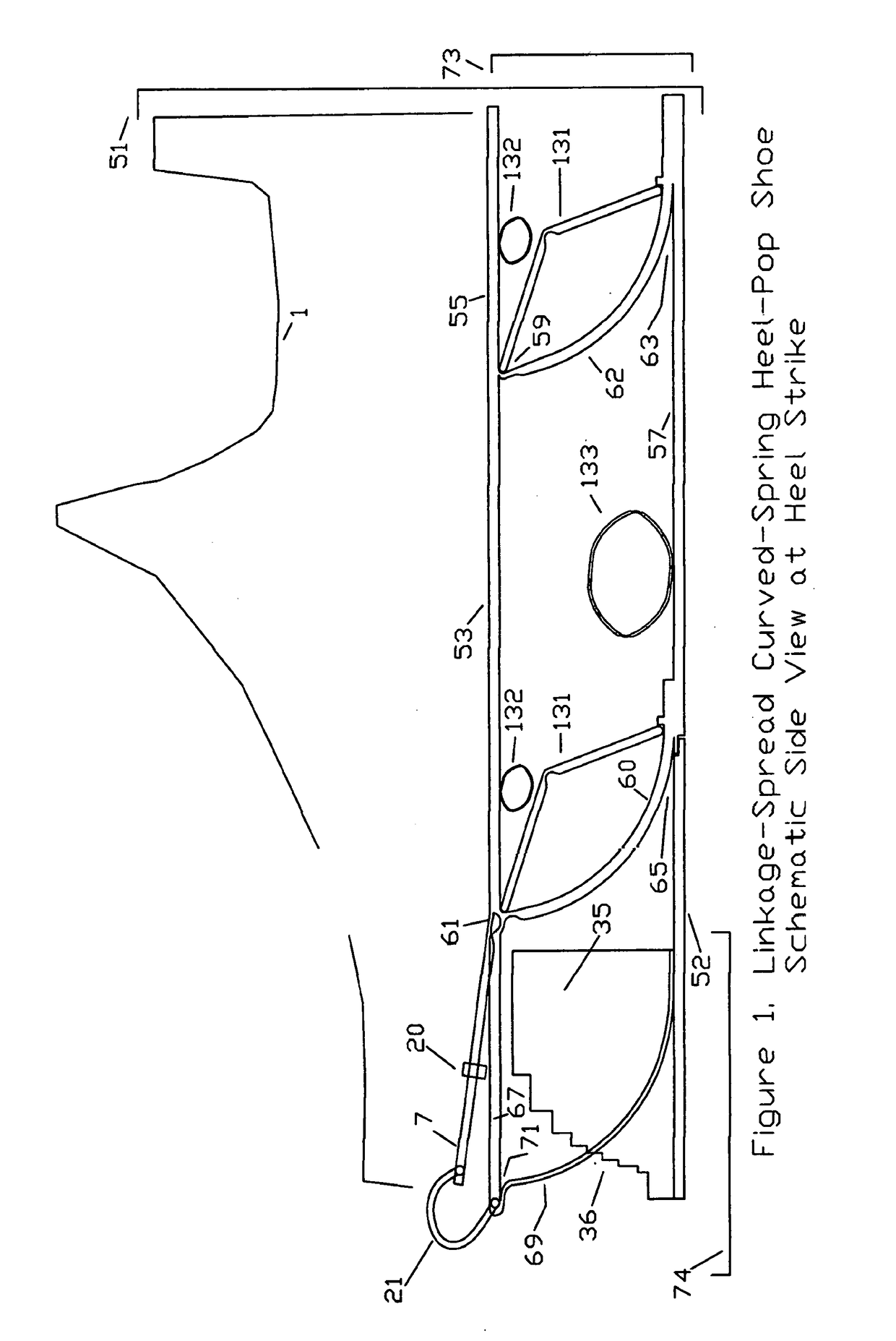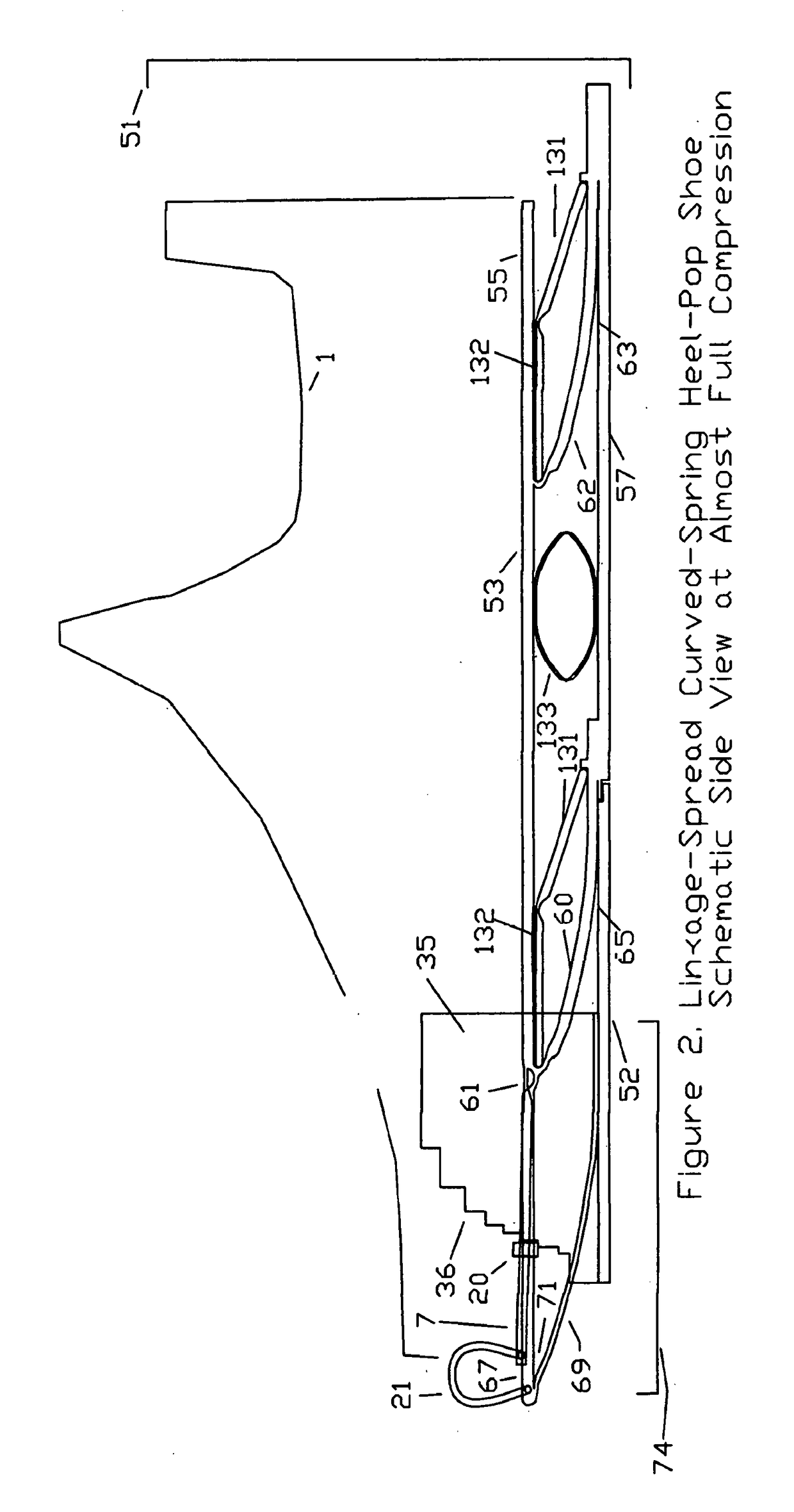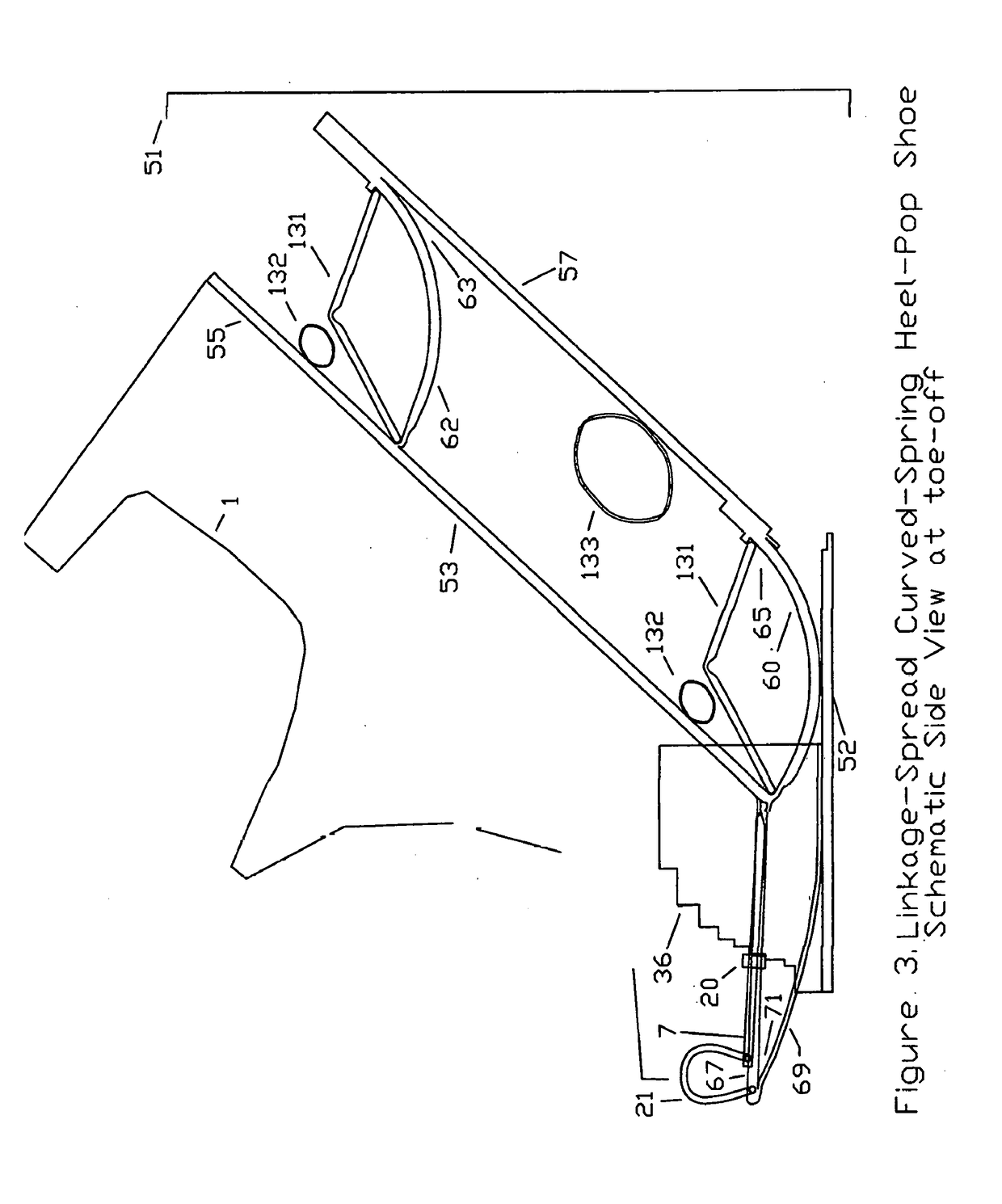Substantial energy return shoe with optimal low-impact springs, tuned gear change, and smart knee brace
a technology of low-impact springs and energy-return shoes, which is applied in the direction of low internal friction springs, soles, mechanical equipment, etc., can solve the problems of wasting most of the stored heel impact energy, unable to provide enhanced heel lift and hence substantial energy-return, and difficult to understand energy-return, etc., to achieve less energy-return, less energy-return, and more energy-return
- Summary
- Abstract
- Description
- Claims
- Application Information
AI Technical Summary
Benefits of technology
Problems solved by technology
Method used
Image
Examples
first embodiment
[0076]FIGS. 1, 2, and 3 depict schematic side views at heel strike, mid-stance, and toe-off of the linkage-spread curved-spring heel-pop shoe, which provides enhanced heel lift—which in turn provides substantial energy return. This is the first version of the invention, namely the heel-pop energy return shoe (featuring enhanced heel-lift). The sole compression due to the impact force of running is resisted by a spring system. After the sole is compressed, the runner's toe weight pins down the toe plate of the sole while the combination of the spring system and the sole's parallelogram-like geometry causes the heel section to be lifted upward into the air by an enhanced distance which is of the order of two to three times the compression distance of the heel during the period between heel-strike and mid-stance.
[0077]The basic structure of linkage-spread curved spring heel-pop shoe 51 features linkage-spread curved spring heel-pop sole 73 which comprises the following elements (which ...
second embodiment
[0099]the invention is a class of novel springs, referred to herein as optimal springs in that their force curves are optimized.
These can be complex springs or spring systems. The optimal spring class comprises variations on curved springs and arch springs. These variations are designed to optimize the force curve for footwear and for a number of other applications—where it is advantageous to minimize the maximum force (especially when there is an impact force) on the device structural elements and / or on the user of the device such as a runner. The optimization criterion is to maximize the amount of energy absorbed, namely the area under the force curve for a given maximum force point on that curve. If there are no geometric constraints on the size of the spring, then various conventional springs can be used to achieve force-curve optimized springs, or spring systems. However, the force-curve optimized springs in the instant invention achieve the minimum thickness at full compressio...
fourth embodiment
[0134]FIG. 24 shows schematic side views and a top view of optimal springs in a conventional shoe, which means shoes that do not feature the heel-pop capability for enhanced heel-lift. The use of optimal shoes in conventional shoes is the invention because it can be used in all shoes, thereby providing the health benefits of significantly reduced maximum impact force to the people of the world. Constant thickness shoe 411 comprises shoe upper 1 fixably attached to the top of constant thickness sole 405. Constant thickness shoe 411 comprises shoe upper 1 fixably attached to the top of constant thickness sole 405. Tapered shoe 413 comprises shoe upper 1 fixably attached to the top of tapered thickness sole 407. One or more internal linkage mirrored arch springs 107 can be located in both constant thickness sole 405 and tapered thickness sole 407, e.g. Likewise is true for sideways internal linkage mirrored arch springs 401, which are the same as internal linkage mirrored arch springs ...
PUM
 Login to View More
Login to View More Abstract
Description
Claims
Application Information
 Login to View More
Login to View More - R&D
- Intellectual Property
- Life Sciences
- Materials
- Tech Scout
- Unparalleled Data Quality
- Higher Quality Content
- 60% Fewer Hallucinations
Browse by: Latest US Patents, China's latest patents, Technical Efficacy Thesaurus, Application Domain, Technology Topic, Popular Technical Reports.
© 2025 PatSnap. All rights reserved.Legal|Privacy policy|Modern Slavery Act Transparency Statement|Sitemap|About US| Contact US: help@patsnap.com



